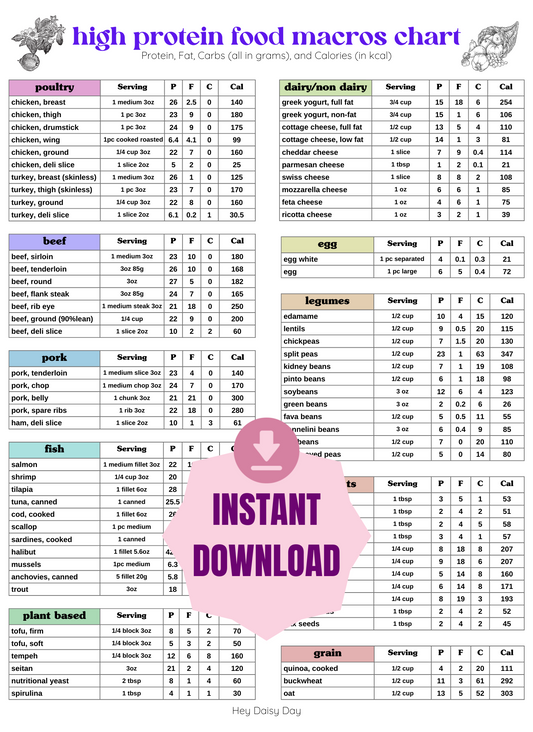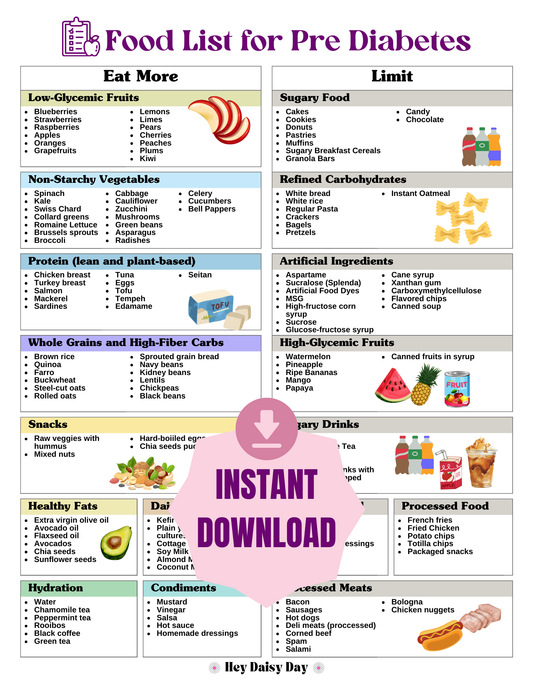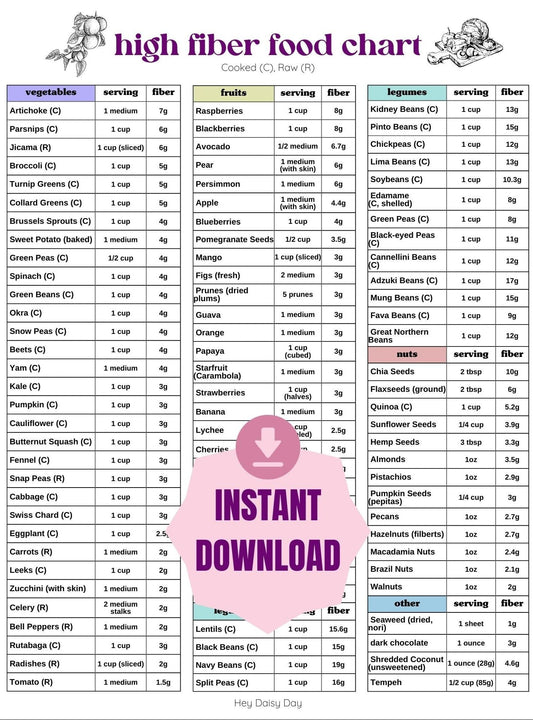Did you know that you should to consume 1 gram-1.2 grams of protein per pound of lean body mass? For example, if you weigh 130lbs, your daily protein intake should fall between 80g to 100g. (Click here to measure your lean body mass) If you haven't calculated your daily protein intake yet, try it for a day or two. You might be surprised by the results! (Who knows, you might even discover you're already doing great! 😊)
Since reaching your daily protein goal can be a challenge, here are 4 tips to help you increase your protein intake.
[Related blog about how to keep track of your protein intake daily.]
1. Prioritize Protein in Every Meal and Snack
Make protein a priority in every meal and snack you consume. Instead of just having an apple for a snack, consider pairing it with two tablespoons of peanut butter to boost the protein content by 7 grams. Likewise, adding a half-can of tuna to green salads or grain bowls can add 20 grams of high-quality, filling protein to your dish. Including protein in each meal and snack can support muscle growth, enhance satiety, and help regulate blood sugar levels.

2. Cereal or Greek Yogurt? You Decide!
While many cereals contain around 3.5 grams of protein per serving, Greek yogurt offers a protein-packed alternative. Opting for Greek yogurt for breakfast can provide a quick and nutritious option. For example, a simple breakfast made with one 7-ounce container of plain Greek yogurt, two tablespoons of pumpkin seeds, and one cup of raspberries contains a whopping 30 grams of protein. Not only is this choice more nutritious, but the fiber and protein in this combination will also keep you feeling full until your next meal or snack.

3. Legume is your best friend in pasta dishes!
Most traditional pasta options offer around 6 grams of protein per cooked cup. However, legume-based pasta significantly boosts the protein content, providing up to 14 grams per cooked cup! [Here is my favorite!] Imagine pairing this super pasta with high-protein ingredients like chicken or beans for a satisfying meal that keeps you fuller for longer.
While pasta sauce is a beloved ingredient for many, it tends to be low in protein, offering just 1.84 grams per half-cup serving. To increase the protein content and make your meals more nutritious and filling, consider blending cooked lentils into your pasta sauce. With one cup of lentils containing 18 grams of protein, this simple addition packs a nutritional punch.
*To incorporate lentils into your pasta sauce, blend 1 cup of cooked red lentils with two cups of sauce using a blender or immersion blender. Lentils have a mild taste, making this recipe suitable for both kids and adults alike.

4. Enhance your grain dishes with bone broth!
Bone broth is a protein powerhouse compared to regular broth, as it's simmered longer to extract more protein from the animal bones. Not only does this result in a flavorful product, but it also provides a significant protein boost.
For example, a cup of chicken bone broth contains 9 grams of protein per cup, which is 8 grams more than what's found in the same serving of regular chicken broth. You can use bone broth to cook grains like rice and quinoa, adding both flavor and protein to your dishes. It also serves as a protein-rich base for soups and can be enjoyed as a satisfying hot beverage.

These simple tips can significantly boost your daily protein intake!
When I was younger, I never paid much attention to my protein intake. However, now that I'm in my 40s, I've realized the importance of being more conscious about it. Maintaining muscle mass is crucial for strength and overall health.
Additionally, being more aware of my protein intake allows me to ensure that my child's meals are balanced as well! (It's like a little secret trick, such as sneaking lentils into the pasta sauce!)
I hope these tips are straightforward enough for you to incorporate into your routine! Feel free to download our PDF meal planner template if you'd like to start meal prepping weekly.





